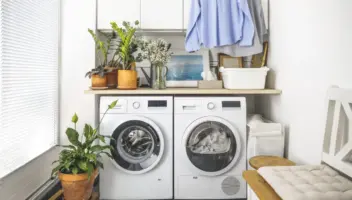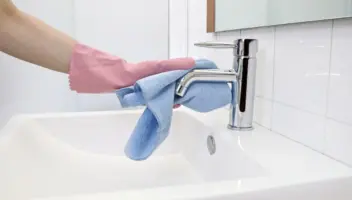Hydration Hacks for the Active Season: Maximizing Performance with Hydrated Exercise

For many, the warmer months usher in a fervor of spring sports leagues, outdoor adventures, and an eagerness to revel in the sunshine. From casual joggers to the most dedicated fitness buffs, hydrated exercise ensures peak performance and a healthy comeback from Wild Nature’s call to action. While the spirit of competition and camaraderie fills the air, let’s not forget the sixth man in our quest for peak performance: proper hydration. Here, we offer a comprehensive guide to maintaining and enhancing your hydration exercise regime, fueling your passion for an active lifestyle this season.
The Science of Hydration
Water is the source of life, vital for every cell, tissue, and organ in our bodies. Understanding the science behind hydration is as essential for the water bottle-carrying jogger as it is for the health enthusiast monitoring their daily intake. Water is a vital component for nearly every process in the human body.
During exercise, our bodies demand more water to maintain muscle function, regulate body temperature, and lubricate joints. A mere 2% reduction in body water content can significantly impair athletic performance, leading to symptoms such as:
- Fatigue
- Decreased coordination
- Muscle cramps
There are obvious signs of dehydration that should not be overlooked. If you’ve been feeling a little off during your workout, headaches, dizziness, or a dry mouth could be red flags. The takeaway is simple: Hydration isn’t merely a wellness fad. It’s a scientific imperative for your body’s optimal function, especially when active.
More Signs of Dehydration
- Thirst
- Dry skin
- Dark urine (or infrequent urination)
- Difficulty Concentrating
- Irritability
- Light-headedness
- Lack of sweat or warm, dry skin
Understanding these signs of dehydration is paramount in preventing its adverse effects and ensuring your activities are enjoyable and beneficial.
Understanding Safe Drinking Water
Not all water is created equally. Safe drinking water should be free from harmful contaminants and achieve the right balance of essential minerals to fuel your active lifestyle. According to the Environmental Protection Agency (EPA), contaminants in water can lead to health issues ranging from gastrointestinal illness to neurological disorders.
Common Contaminants in City Water and Well Water
- Lead
- Chlorine
- Pesticides and herbicides
- Nitrates
- Bacteria and viruses
With an increased focus on health and wellness, ensuring the water we drink is safe and free from harmful chemicals is essential. Another crucial consideration is the mineral balance in our drinking water. The EPA recommends a specific range of calcium, magnesium, sodium, and potassium minerals for optimal hydration.
While most municipal water treatment facilities prioritize eliminating harmful contaminants, they often overlook the crucial mineral balance in safe drinking water. Meanwhile, homeowners with well water must proactively test their water for contaminants and bacteria.
Access to clean, contaminant-reduced water is a cornerstone of maintaining hydration that supports an active lifestyle. Home water solutions play a pivotal role in providing safe drinking water, a necessity for every household.
Hydration Strategies for Active Individuals
The golden rule of hydration before, during, and after exercise is a well-worn mantra. Timing is critical to fully maximize its effectiveness. Ensuring you are adequately hydrated before you even start your workout sets the stage for success. Balanced sips during your session will prevent the toll of dehydration, and a thoughtful replenishment routine post-exercise can significantly impact recovery.
Consider these strategies:
- Pre-exercise: Drink 17-20 ounces of water 2-3 hours before exercising. Plus, 8 ounces within 30 minutes of working out.
- During exercise: Consume 7-10 ounces of water every 10-20 minutes.
- Post-exercise: Replenish with 16-24 ounces of water for every pound lost during activity.
Incorporating electrolyte-infused waters can help maintain optimal hydration levels and replace minerals lost during sweat.
Electrolyte-Boosted Drinks
Electrolytes are minerals that conduct electrical impulses in the body to support muscle function and healthy nerve activity. They also help regulate fluid balance. Sodium is the electrolyte we lose most in sweat. During extended exercise, electrolyte-replacement sports drinks can be essential allies.
However, not all sports drinks are created equal. Some contain artificial sweeteners or excess sugar levels, which can be counterproductive to your health goals. Instead, opt for options with natural electrolytes like coconut water or fresh fruit juices.
Pre-Exercise Hydration Meal
Did you know the food you consume before exercise can also impact your hydration levels? In addition to hydrating beverages, incorporating foods rich in water content and minerals can help boost hydration. Consider adding hydrating fruits and vegetables like watermelon, cucumber, and celery to your pre-workout meal.
Special Considerations for Children in Sports
It’s not just the adults who need to pay heed to their hydration. For parents with children in sports, understanding the unique needs of youthful bodies in motion is paramount. Children’s hydration demands are higher relative to their size and often require additional guidance and support to maintain hydration levels.
Parents and coaches should ensure young athletes drink water regularly, as children may not always recognize the early signs of dehydration. Educating them on the importance of drinking water before, during, and after playing sports is crucial for their safety and performance.
Fun Ways to Incorporate Hydration in Exercise for Kids:
- Make water breaks a game: Encourage children to take sips of water during breaks between activities.
- Get creative with infused waters: Adding fruits or vegetables to water can make it more appealing and encourage kids to drink more.
- Use colorful and fun reusable water bottles: Letting children pick out their own personalized water bottle can make hydration feel like a fun activity rather than a chore.
Remember, ensuring young athletes are well-prepared and have access to clean and safe drinking water means more time to enjoy their sports safely and healthily.
The Role of High-Quality Water at Home
The foundation of effective hydration begins at home. Leaf Home Water Solutions offers a range of water purification systems designed to provide your family with safe, clean drinking water. From advanced filtration systems to innovative purification technologies, ensuring the water you and your loved ones consume supports your active lifestyle has never been easier.
Types of Water Purification Systems:
- Reverse Osmosis: This system uses a semi-permeable membrane to reduce impurities, resulting in clear and clean water.
- Carbon Filtration: Carbon filters use activated carbon to absorb contaminants and improve water taste and odor.
- UV Disinfection: UV light is used to protect against bacteria and viruses in the water. It is a chemical-free and environmentally friendly option.
- Water Softeners: These systems reduce excess minerals like calcium and magnesium, which can impact the taste of water and lead to scaling in pipes and appliances.
Whether you’re an active individual looking to optimize your hydration, or a parent concerned about their family’s access to clean drinking water, Leaf Home has you covered.
Practical Tips for Incorporating Hydrated Exercise into Your Routine
A well-oiled workout routine is one part consistency, one part sheer will, and one-part smart hydration. Making hydration a habit can significantly enhance your exercise routine and overall well-being. Here are a few practical tips for staying hydrated for athletes and active individuals:
- Set reminders: Use a phone app or set alarms to remind you to drink water at regular intervals.
- Keep a water bottle handy: Having a water bottle within reach can make it easier to stay hydrated throughout the day.
- Track your daily intake: Monitor the amount of water you consume each day and aim for the recommended 8 glasses.
- Mix it up with infused waters: For an added flavor boost, try infusing your water with fruits, vegetables, or herbs.
- Drink before you get thirsty: It’s a general rule, if you are feeling thirsty, you are already dehydrated. Keep sipping water throughout the day to avoid dehydration.
- Balance fluids alongside your meals: Incorporating hydrating foods and beverages into your meals can help maintain optimal hydration levels.
Remember, hydrated exercise is not just about consuming water during exercise; it’s about making hydration a part of your daily routine. With these tips and strategies, you can fuel your body with the water it needs to achieve peak performance and maintain a healthy lifestyle. So, incorporate these tips into your routine to reap the benefits of hydrated exercise!
Wrapping It All Up: Hydrated Exercise
Hydration is a key player in the arena of health and fitness, especially during the active season. You can elevate your performance and recovery by understanding the importance of hydration, ensuring access to safe drinking water, and implementing practical hydration strategies. Leaf Home Water Solutions stands ready to support your hydration goals with solutions catering to active families’ needs.
Speak with a water expert today and discover how Leaf Home can help you and your family stay optimally hydrated today and every day.
Ensure every adventure, every jog, every spring in your step is matched with the assurance of premium hydration.


